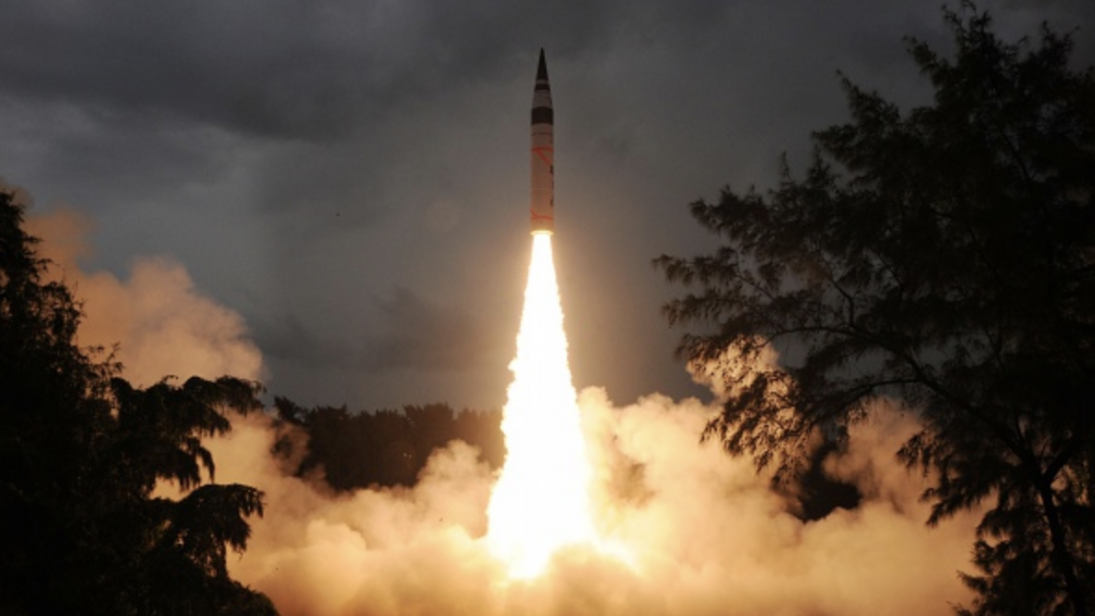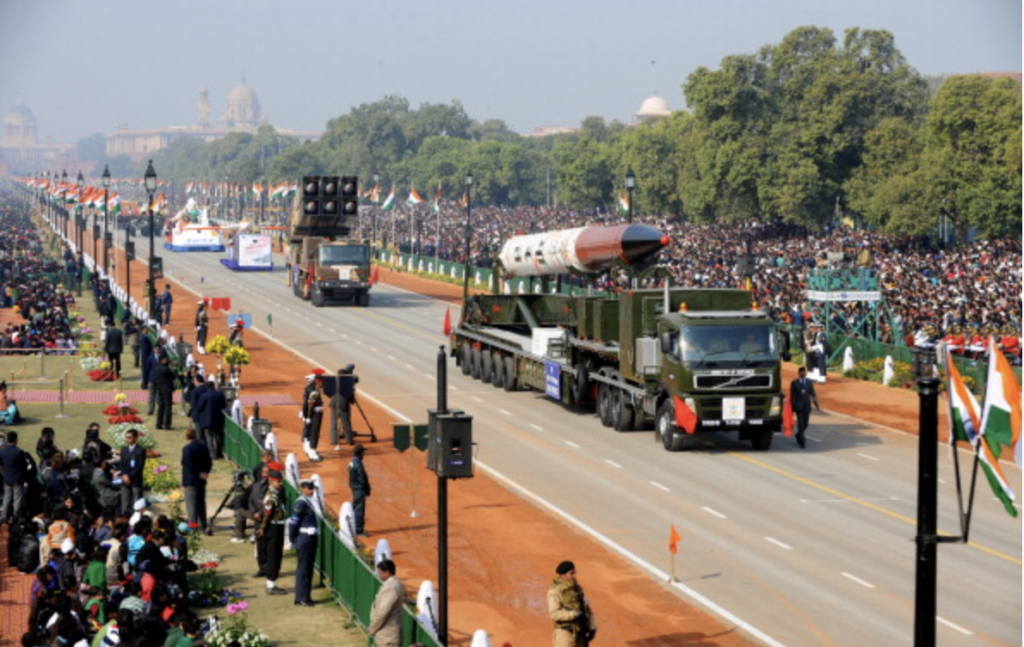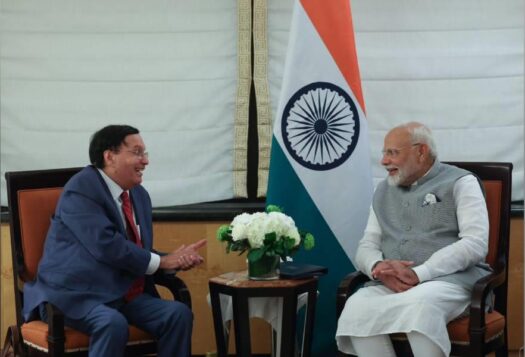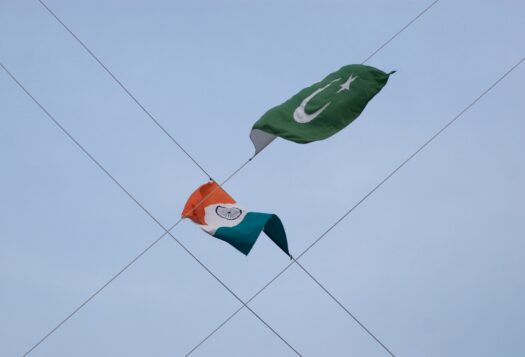
The Agni Prime (also known as the Agni-P and Agni-IP) has been tested thrice off the Odisha coast in under two years, with its first test in June 2021. The third, most recent test on October 21 came during India’s defense expo in Gujarat, allowing India to demonstrate the Agni Prime as the sixth successful missile from the Agni series.
The Agni Prime is a step up for the Agni series: it is canisterized, road-mobile, and has multiple reentry vehicle capability. With a range of 1000-2000 km, it is geared to target Pakistan and may supplement or substitute the Prithvi II, Agni I and Agni II missiles.
The accuracy of Agni Prime – reportedly in the lower two digits – has created speculation that it confers a counterforce capability and reenergized discussion over whether India has counterforce intentions. Analysts discerned as much from the technological trajectory of India’s deterrent, fearing that this renders India’s “No First Use” (NFU) pledge shaky.
One can expect India to profit from the debate generated. India’s nuclear doctrinal movement of ambiguity lately builds uncertainty on India’s intentions and action. In the current context of the two-front war threat, nuclear ambiguity helps India leverage its nuclear deterrent – without actually resorting to nuclear weapons. The Agni Prime launch and the subsequent debate it generated compensate for India’s challenges in coping with the two-front threat posed by China and Pakistan.
The Catalyzing Two-Front War Factor
Over the last two years, India has already taken diplomatic steps to confront its vulnerability to a two-front war scenario. After the 2020 Galwan clashes, India has managed to partially roll back Chinese intrusions in Ladakh through military-level discussions and quiet diplomacy. India also agreed to a ceasefire on the Line of Control with Pakistan in secret, third-party facilitated talks.
In the current context of the two-front threat, nuclear ambiguity helps India leverage its nuclear deterrent – without actually resorting to nuclear weapons.
India has taken steps at the conventional level, including a pivot of its conventional forces from its western to its northern borders. It has also started to reorganize its forces on both fronts into integrated battle groups (IBG). It is appraising reorganization with front-specific Integrated Theatre Commands.
On the nuclear level, India continues to incrementally put together the earlier envisaged elements of its triad. But its seaborne leg would not be potent until the K-4 ballistic missile, which had two back-to-back test firings from a submerged platform in January 2020, is fired from either nuclear submarine, the INS Arihant or soon-to-be-commissioned INS Arighat.
The Air Force’s concentration on winning the air war under two-front war conditions places a premium on air-delivered nuclear ordinance, since such operations divert a high number of aircraft from its primary role.
India’s nuclear triad places greater emphasis on land-based systems due to the sea leg being a work-in-progress and its air-leg’s availability only at a premium. The technological edge in the Agni IV and Agni V missiles, meant to deter China, has been transferred to Pakistan-centric Agni Prime. India has also substituted the Pakistan-specific Prithvi series with the Prahaar, Pralay, and Shaurya missiles, which all have varying ranges.
Agni Prime in the Two-Front War Scenario
In a worst-case scenario of a two-front war, the Indian military would find itself stretched with its current capabilities. Consequently, India may have to compensate by leveraging its nuclear-level to deter and, if need be, redress potential conventional imbalances and quandaries. The nuclear signaling between Russia and the North Atlantic Treaty Organization (NATO) at multiple junctures in the ongoing Ukraine war has loosened the constraints on nuclear posturing, allowing India to leverage its prevailing doctrinal ambiguity to good effect in a short timeframe.
The Agni Prime missile was under development before the Ladakh crisis, with its conceptual inception beginning sometime mid-last decade. However, even at the time, the two-front war thinking in India was over half a decade old. Whereas technological advance has taken their course, doctrinal thinking has not been far behind.

An accurate, canisterized, road-mobile missile has the advantage of speed of response against point targets. This development has fueled apprehensions of a destabilizing shift in India’s nuclear posture, given that it is now able to take out hardened targets housing Pakistan’s strategic systems comprising Pakistan’s second strike capability.
India has done little to forestall the fears, with successive defense ministers making loose statements on NFU. India has thus used the fears generated to cover its nuclear intentions with ambiguity. The Agni Prime has validated the perspective on India’s nuclear capability that it is shifting away from traditional moorings towards jettisoning NFU and contemplating counter-force options; this helps India’s shift towards deterrence leveraging ambiguity over its earlier preference for transparency.
Prosecuting a Two-Front War
Indian strategists would designate a priority front (also referred to as the primary front) and a secondary front, fighting to stabilize or generate a favorable outcome on the priority front while keeping the secondary front as dormant as possible. India could subsequently switch the designation once the primary front has stabilized or if, in the interim, developments on the secondary front compel greater attention and devotion of resources.
If Pakistan is designated initially as the priority front, then India’s new-fangled IBGs could be unleashed on the border to keep it in check. The popular scenario has it that a conventionally-disadvantaged Pakistan could resort to nuclear weapons as part of its full spectrum deterrence doctrine, by way of either signaling with or introducing tactical nuclear weapons into the conflict.
Even if Pakistan is initially not the primary front, since India would be keeping up a holding action, it could complement its hard-put conventional forces efforts with nuclear warnings, thereby deterring Pakistan from taking advantage of its psychological ascendancy.
In a two-front war scenario, Pakistan, as one part of a collusive alliance, will be fairly confident of taking on India. However, it is unlikely that nuclear weapons will likely figure in its war repertoire. Besides, with considerable dilution in India’s Pakistan-specific forces after the Chinese intrusion, Pakistan may be better positioned conventionally than India.
Consequently, India might require leveraging nuclear weapons to stabilize the front quickly before it could revert its attention to the China front. Bringing nuclear weapons into the foreground through nuclear signaling will help concentrate minds. India has already set the stage by building in ambiguity and generating nuclear fears in third parties, incentivizing them to intervene with de-escalatory initiatives.
The configuration of Agni Prime and the subsequent discussion it has instigated on nuclear dangers helps India with navigating the challenges it might face in a two-front war scenario.
Nuclear signaling on the Pakistan front will also put China on notice: cautioning it against crossing Indian redlines, slowing operations by necessitating protective measures, and forcing a reevaluation of its war aims in light of nuclear dynamics. Agni Prime’s utility is not without relevance on the China front with its range encompassing portions of the Tibetan plateau, allowing for counter military options in the worst case of conventional asymmetry with China and Chinese military break throughs, necessitating Indian reconsideration of its NFU.
Conclusion
The configuration of Agni Prime and the subsequent discussion it has instigated on nuclear dangers helps India with navigating the challenges it might face in a two-front war scenario. In war, national security concerns dictate the use of all instruments, including the appropriate employment of nuclear weapons. The appropriate use for nuclear weapons is to strengthen in-conflict deterrence. Escalation prevention is made possible by brinkmanship, the instigating and deploying of a fear of a war going nuclear.
Pre-conflict ambiguity surrounding the deterrent posture enables shifting the nuclear goalposts in war. India’s intent to stay in Pakistan’s nuclear hand will be better met by conveying its abandonment of nuclear sobriety. The Agni Prime lends credibility to India’s shift to nuclear brinkmanship in case confronted with the worst-case scenario of a two-front war.
***
Click here to read this article in Urdu.
Image 1: Pallava Bagla/Corbis via Getty Images
Image 2: RAVEENDRAN/AFP via Getty Images


